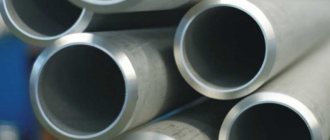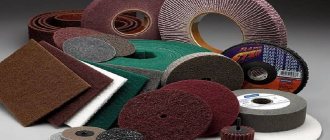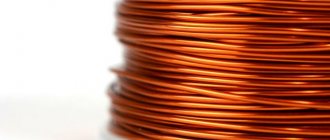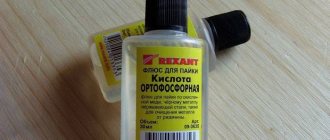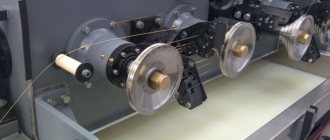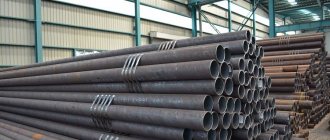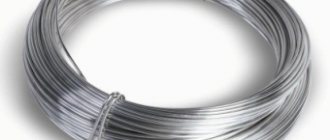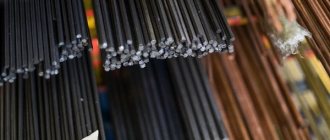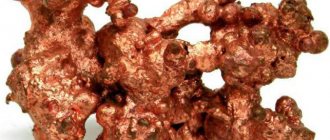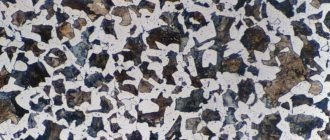Properties of oxygen and methods of its production
In gas welding and cutting, the metal is heated by a high-temperature gas flame obtained by burning flammable gas or liquid vapor mixed with technically pure oxygen.
Oxygen is the most common element on earth, found in the form of chemical compounds with various substances: in the earth - up to 50% by weight, in combination with hydrogen in water - about 86% by weight and in air - up to 21% by volume and 23% by weight.
Oxygen under normal conditions (temperature 20°C, pressure 0.1 MPa) is a colorless, non-flammable gas, slightly heavier than air, odorless, but actively supporting combustion. At normal atmospheric pressure and a temperature of 0°C, the mass of 1 m3 of oxygen is 1.43 kg, and at a temperature of 20°C and normal atmospheric pressure - 1.33 kg.
Oxygen has high chemical activity, forming compounds with all chemical elements except inert gases (argon, helium, xenon, krypton and neon). Reactions of the compound with oxygen occur with the release of a large amount of heat, i.e. they are exothermic in nature.
When compressed gaseous oxygen comes into contact with organic substances, oils, fats, coal dust, flammable plastics, they may spontaneously ignite as a result of the release of heat during rapid compression of oxygen, friction and impact of solid particles on metal, as well as an electrostatic spark discharge. Therefore, when using oxygen, care must be taken to ensure that it does not come into contact with flammable or combustible substances.
All oxygen equipment, oxygen lines and cylinders must be thoroughly degreased. Oxygen is capable of forming explosive mixtures with flammable gases or liquid flammable vapors over a wide range, which can also lead to explosions in the presence of an open flame or even a spark.
The noted features of oxygen should always be kept in mind when using it in gas-flame processing processes.
Atmospheric air is mainly a mechanical mixture of three gases with the following volume content: nitrogen - 78.08%, oxygen - 20.95%, argon - 0.94%, the rest - carbon dioxide, hydrogen, nitrous oxide, etc. Oxygen are obtained by dividing air into oxygen and nitrogen by the method of deep cooling (liquefaction), along with the separation of argon, the use of which in argon arc welding is continuously increasing. Nitrogen is used as a shielding gas when welding copper.
Oxygen can be obtained chemically or by electrolysis of water. Chemical methods are ineffective and uneconomical. When water is electrolyzed with direct current, oxygen is produced as a by-product in the production of pure hydrogen.
In industry, oxygen is obtained from atmospheric air by deep cooling and rectification. In installations for obtaining oxygen and nitrogen from air, the latter is cleaned of harmful impurities, compressed in a compressor to the appropriate refrigeration cycle pressure of 0.6-20 MPa and cooled in heat exchangers to the liquefaction temperature, the difference in the liquefaction temperatures of oxygen and nitrogen is 13 ° C, which sufficient for their complete separation in the liquid phase.
Liquid pure oxygen accumulates in an air separation apparatus, evaporates and collects in a gas tank, from where it is pumped into cylinders by a compressor under a pressure of up to 20 MPa.
Technical oxygen is also transported via pipeline. The pressure of oxygen transported through the pipeline must be agreed upon between the manufacturer and the consumer. Oxygen is delivered to the welding site in oxygen cylinders, and in liquid form in special vessels with good thermal insulation.
To convert liquid oxygen into gas, gasifiers or pumps with liquid oxygen evaporators are used. At normal atmospheric pressure and temperature 20°C, 1 dm3 of liquid oxygen upon evaporation gives 860 dm3 of gaseous oxygen. Therefore, it is advisable to deliver oxygen to the welding site in a liquid state, since this reduces the weight of the container by 10 times, which saves metal for the manufacture of cylinders and reduces the cost of transporting and storing cylinders.
For welding and cutting in accordance with GOST 5583-78, technical oxygen is produced in three grades:
- 1st - purity of at least 99.7%
- 2nd - no less than 99.5%
- 3rd - no less than 99.2% by volume
Oxygen purity is of great importance for oxyfuel cutting. The less gas impurities it contains, the higher the cutting speed, the cleaner the edges and the lower the oxygen consumption.
weldering.com
Technical gaseous oxygen
In gas welding, oxygen is an indispensable additional material that provides a high combustion temperature of the flame so that metal of the required thickness can be melted. It is used as the main temperature force, while other gases have a protective function. Oxygen is technically colorless and odorless. It is not flammable in itself, but when interacting with other substances it significantly increases the combustion temperature. It is not explosive like many others in this area. This is an accessible and relatively inexpensive substance. There are several technical varieties that differ in the content of impurities, their volume and quantity. The main indicator of quality is the volume of clean gas.
Technical oxygen in cylinders
Even with impurities, the gas retains high chemical activity. It forms a lot of chemical compounds that are found on Earth. Inert gases do not interact with it to form compounds. Gold, silver, platinum and other noble metals also survive its effects without a trace. Oxygen is most often stored in liquid form, as it is more compact, convenient and economical. Often its transformation into a gaseous state begins at the point of use.
Scope of application in welding
Technical gaseous oxygen is widely used in welding in shielded gases. Regardless of the main shielding gas, the second substance supplied to the torch is almost always oxygen. It can be found in construction, where metal structures and frames for future buildings are created. It is also mandatory in every welding workshop. Gas is used in the repair of pipes, thin metal products, in repair shops, in production in assembly shops, and so on.
Oxygen is most actively used when cutting metal. Here the substance is fed into the burner under high pressure, which gives a long and powerful jet. This allows you to cut through metal products to a greater thickness. With this burning, the edges turn out to be quite smooth.
Types of technical oxygen
Technical gaseous oxygen is produced in accordance with GOST 5583-65. According to this standard, there are two main grades that are used in industry. Naturally, there are other, more contaminated options that can be used in the private sphere, but they are not relevant to the standards of serious production work, where high responsibility is placed on the connections. There are first and second grades of gas with different technical characteristics.
Characteristics of brands of oxygen gas
Despite the fact that both grades are used in almost the same field and in many cases are interchangeable, sometimes only the first grade is required for welding. The differences in their characteristics are also not fundamentally significant, just like the differences in composition. Here are the basic details for each option:
| Options | Types of technical oxygen | |
| first | second | |
| Oxygen content, % | 99,7 | 99,5 |
| Water vapor content, %, | 0,007 | 0,009 |
| Proportion of hydrogen in the composition, % | 0,3 | 0,5 |
| Carbon dioxide content, % | No normalized data | |
| Smell | Absent |
Characteristics of brands of liquid technical oxygen
Liquid oxygen is pale blue in color. Thanks to this, oxygen is supplied in blue cylinders. The liquid is a powerful paramagnetic. The specific density of this material is 1.141 g/cm3. The liquid has moderately cryogenic properties. Its freezing point is -222.65 degrees Celsius. It begins to boil already at a temperature of -182.96 degrees Celsius. This substance is produced in an industrial environment by fractional distillation of air.
Technical designation
The main standard by which technical oxygen is produced is GOST 5583-78. This standard applies to both medical and industrial oxygen. Gas is obtained from atmospheric air, for which low-temperature rectification is used, or by electrolysis of water. The composition, permissible presence and ratio of impurities for each grade are indicated here. There are also operating instructions and other important data. For use in official enterprises, this GOST is the main one.
Instructions for the use of technical oxygen in welding
Before starting welding, you need to check the cylinder. There should be no oil or other contaminants on it, as this may cause fire and accident. The cylinder must be in a vertical position and be well secured so that it does not fall when the welder moves.
"Important!
The distance from the cylinder to the flame source should not be less than 5 meters.”
Before starting welding, shielding gas is first introduced. Having figured out what oxygen is needed for, it is worth understanding that it significantly increases the combustion temperature and to check the functionality of the burner, as well as to warm up the parts, its use may be unnecessary. When the actual welding begins. Then it is worth releasing gas according to the welding parameters for a particular case, depending on the workpiece.
Security measures
To avoid an accident during use, you should follow certain rules that can reduce all dangers to a minimum. The main security measures include the following:
- Do not allow the gas concentration in the room to exceed 23%, as this may lead to an increased risk of fire;
- Despite the fact that oxygen is a non-flammable substance, it has a strong effect on other elements, so when working with it you need to use only a certain range of approved materials;
- If contact occurs with oily substances, they oxidize almost instantly, which can cause an explosion or fire;
- It is strictly forbidden to use cylinders that previously contained oxygen for other flammable substances;
- During transportation, it is necessary to exclude the possibility of shocks, falls and other factors of damage.
Conclusion
The physical and chemical properties of oxygen make it a unique gas for the welding field. If protective gases have analogues and can be replaced, if necessary, then there is nothing to replace this one with. The use has its own safety features, but it is not as scary as when using acetylene and other gases.
svarkaipayka.ru
Storage, transportation and precautions
For storage and transportation of O2, cylinders that are blue in color and have a characteristic black inscription are used. The valve is made of brass and equipped with a right-hand thread. In this case, the fittings must be constantly checked for serviceability and tightness. Such containers are stored in specially equipped warehouses or outdoors under a canopy that provides protection from sunlight and precipitation.
Oxygen cylinders must be transported on spring vehicles or vehicles, maintaining a horizontal position. Although in some cases a vertical position during transportation is allowed, but only with a special device that prevents any shocks or falls.
During operation, to avoid dangerous situations, the following safety precautions should be followed:
- Although the gas itself is not flammable or explosive, it supports the active combustion of other substances, so only approved materials should be used when working with it.
- Upon contact with oily substances, an immediate oxidation reaction occurs, which can lead to fire or even an explosion.
- In order to minimize the likelihood of fires, the O2 concentration in the premises should be no more than 23%.
- It is prohibited to use oxygen vessels and pipelines for storing and transporting flammable substances.
This is definitely not the way to handle gas cylinders.
Oxygen
Details Details Published 05/27/2012 13:: 5456
To produce a high-temperature welding flame, gas or vapor of a flammable liquid is burned in pure oxygen. If the combustion of fuel occurs not in oxygen, but in air, where oxygen makes up 7% by volume, then the flame temperature will be much lower.
Oxygen at atmospheric pressure and ordinary temperature is a colorless, odorless gas. It is heavier than air. At atmospheric pressure and temperature 0°C, 1 m3 of oxygen weighs 1.43 kg.
Technical oxygen is obtained from air at oxygen plants and delivered to the welding site, usually in compressed form in steel cylinders under a pressure of 150 at.
Oxygen can also be supplied to the welding site through a pipeline from an oxygen station at a pressure of 5 to 30 at.
At a temperature of minus 183 ° C and atmospheric pressure, oxygen turns into a bluish, easily evaporating liquid. 1 liter of liquid oxygen upon evaporation gives 790 liters, or 0.79 m\ of gaseous oxygen at atmospheric pressure and temperature 0°C.
Liquid oxygen is stored and transported in special vessels (tanks), well insulated from the heat of the environment.
When using liquid oxygen for welding and cutting, it is first converted into gas by evaporating in special devices called gasifiers.
Combustible gases and flammable liquids form explosive mixtures when combined with oxygen. Fat and oil may spontaneously ignite when in contact with compressed oxygen. In order to protect against possible accidents, all oxygen equipment is thoroughly degreased. During operation, it is necessary to strictly ensure that oil and grease cannot get on the parts of the oxygen equipment.
electrowelder.ru
Production methods
There are two main methods for producing pure O2:
- From the air: at the initial stage, the air is purified from small impurities and moisture through a multi-stage compressor and air filters. The next step is liquefaction and subsequent separation of O2 and N2 (liquid nitrogen boils at -196°C, so if the temperature is slowly increased, it evaporates earlier).
- From water: current is passed through distilled water (electrolysis reaction), resulting in separation: 2H2O → 2H2 + O2. Considering that absolutely pure water is a dielectric, electrolytes (KOH, NaOH) are added to it before applying current.
The “air” method is considered the most profitable. To obtain technical oxygen in a volume of 1 m³ using this method, about 0.5-1.5 kW/h of electricity is consumed. Whereas electrolysis requires 10-20 kW/h.
The figure shows the “air” method of obtaining
Gas for welding - what provides such a powerful flame?
There are many types of welding. The division is based on the method of obtaining a high-temperature weld pool (type of energy). For example, welding with electric arc, ultrasound, gas flame and others. This torch can cut and weld any metal. The edges of the metal parts being welded literally melt and, when joined, form a new single structure at the place of the alloy, called the weld.
Welding gases include, first of all, acetylene for welding, released as a result of the reaction of calcium carbide with water. Mixing with oxygen, it allows you to obtain a flame temperature of over three thousand degrees.
Propanes, butanes, liquefied MAFs (new gases that replaced acetylene), benzenes, kerosenes and others are also considered welding. An important feature of the use of welding gases is the mandatory presence of oxygen as a combustion catalyst. Moreover, the developed temperature also depends on the quality (purity) of oxygen supplied to the burner.
A gas mixture for welding using technically pure oxygen provides very intense and complete combustion of the mixture itself or vapors of combustible substances, since it provides very high combustion temperatures. The amount of oxygen in the flame will determine its oxidizing or reducing properties.
On the other hand, the use of technical (pure) oxygen requires special cylinders for its storage and supply. When mixed with such oxygen, some gases or compounds may be explosive (due to the extremely high rate of their combustion in such a catalyst).
Often they themselves can be dangerous due to their toxicity. For example, acetylenes, cyanines, etc.
The use of oxygen contained in atmospheric air makes welding gas mixtures less effective. Their combustion slows down, which sharply reduces the flame temperature. The reason is that in the air oxygen makes up no more than a fifth of it; other gases are present to a greater extent, the same nitrogen, for example.
In addition to the above, welding under conditions of using atmospheric oxygen often does not produce the required geometry of the connecting seam and changes the properties of the metal in this zone, which ultimately affects the quality of the connection.
Technical gases are used not only in welding. Shielding gases are also widely used for electric arc welding, etc. The use of various inert (helium, argon) or active (nitrogen, CO2, hydrogen, oxygen) gases as a protective medium for the welding molten pool significantly improves the quality of the result, increases the speed of work, allows you to obtain the required seam parameters, etc.
The principle of gas shielded welding is simple. The required composition is supplied to the arc zone through the nozzle of a special burner under pressure, creating this very protective environment. Popular semi-automatic welding systems are based on this principle.
Such welding is available not only in factory conditions, it is widely used in workshops and even in private garages. Most often, the gas for semi-automatic welding is a mixture of inert and carbon dioxide (in various proportions). Of the inert ones, helium and argon are more applicable. In practice, it is common to use argon, which is why CO2 and argon are present in the composition.
In general, inert gas for welding is needed to protect the molten pool from external exposure to air, as well as if it is necessary to carry out high-quality welding work on stainless steels, titanium and its alloys, non-ferrous metals (nickel, copper, aluminum and alloys), etc. When In this case, the electrode can be anything: a classic melting one, which does not change its shape and structure (serving to create an arc), etc.
The choice of gas needed for welding is influenced by what metal is used in the work. The same mixture of CO2 and argon when welding steel elements contains more carbon dioxide component (about 18%). And when welding stainless steels, argon predominates (98%), CO2 makes up only two percent.
Thus, what gas is used for welding is determined by the metal, its grade, the necessary properties of the seam, the types of welding equipment, requirements for the chemical composition and even the shape of the seams, work conditions, etc.
ogodom.ru

